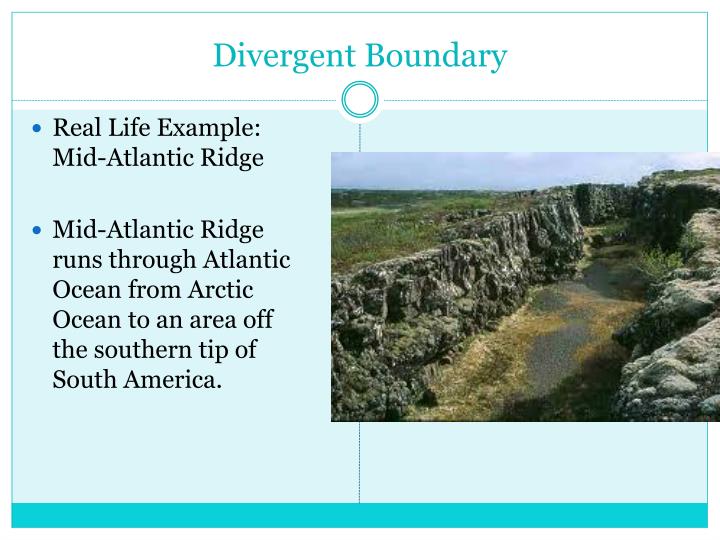


The earthquakes at a conservative plate boundary can be very destructive as they occur close to the Earth's surface.
/plate-boundary-types-56a368da5f9b58b7d0d1d107-59ee3269054ad9001074f883.png)
When the pressure is released, it sends out huge amounts of energy causing an earthquake. Pressure builds up because the plates are still trying to move. As the plates try to move, friction occurs and plates become stuck. Conservative plate boundariesĪt a conservative plate boundary, the plates slide past each other in opposite directions, or in the same direction but at different speeds. Landforms at a divergent plate boundary include ocean ridges, eg the Mid-Atlantic ridge (where the Eurasian plate and the North Atlantic plate are moving apart from each other under the Atlantic Ocean), rift valleys eg the East African Rift Valley and shield volcanoes. Rising magma can also create shield volcanoes. The movement of the plates over the mantle can cause earthquakes. When this happens the magma from the mantle rises up to make (or construct) new crust. Divergent plate boundariesĪt a divergent plate boundary - also known as a constructive plate boundary, the plates move apart from one another. Earthquakes can occur at collision boundaries. If two continental plates collide, neither can sink and so the land buckles upwards to form fold mountains. The volcanic eruptions are often violent, with lots of steam, gas and ash.

The magma escapes through weaknesses in the rock and rises up through a composite volcano, also known as a stratovolcano. The pressure of the magma builds up beneath the Earth's surface. When the plate sinks into the mantle it melts to form magma. This happens because the oceanic plate is denser (heavier) than the continental plate. This is known as subduction and results in the formation of an ocean trench. The plates move towards one another and this movement can cause earthquakes and volcanoes.Īs the plates collide, the oceanic plate is forced beneath the continental plate. Convergent plate boundariesĪ convergent plate boundary also known as a destructive plate boundary, usually involves an oceanic plate and a continental plate. That are pointing away from one another.The point at which two plates meet is called a plate boundary or margin. Quote from video: Then we're gonna look at our first category are the divergent boundaries divergent boundaries with divergent I'm gonna draw two arrows. The part of California west of the San Andreas Fault and all of Baja California are on the Pacific Plate. This feature forms as magma escapes into the space between the spreading tectonic plates. An example is the San Andreas Fault, which connects the southern end of the Juan de Fuca Ridge with the northern end of the East Pacific Rise (ridge) in the Gulf of California (Figure 4.7.1). What topographic feature is formed in divergent?Ī divergent plate boundary often forms a mountain chain known as a ridge. When a continental plate meets an oceanic plate, the thinner, denser, and more flexible oceanic plate sinks beneath the thicker, more rigid continental plate. What is convergent in science?Ĭonvergent (Colliding): This occurs when plates move towards each other and collide. The convergent plate boundaries that occur on continents are the collisional mountain belts. In the ocean basins, convergent plate margins are marked by deep trenches in the sea floor. Most divergent boundaries are located along mid-ocean oceanic ridges (although some are on land). What are the 3 types of divergent boundaries?ĭivergent boundaries are spreading boundaries, where new oceanic crust is created to fill in the space as the plates move apart. The types are ocean-ocean, ocean-continent, and continent-continent. What are the three types of convergent boundary?Ĭonvergent boundaries, where two plates are moving toward each other, are of three types, depending on the type of crust present on either side of the boundary - oceanic or continental. What are the examples of divergent boundary? Picture two giant conveyor belts, facing each other but slowly moving in opposite directions as they transport newly formed oceanic crust away from the ridge crest. What is a divergent boundary?ĭivergent boundaries occur along spreading centers where plates are moving apart and new crust is created by magma pushing up from the mantle. Magma rises into and through the other plate, solidifying into granite, the rock that makes up the continents. At convergent plate boundaries, oceanic crust is often forced down into the mantle where it begins to melt. The Pacific Ring of Fire is an example of a convergent plate boundary.


 0 kommentar(er)
0 kommentar(er)
